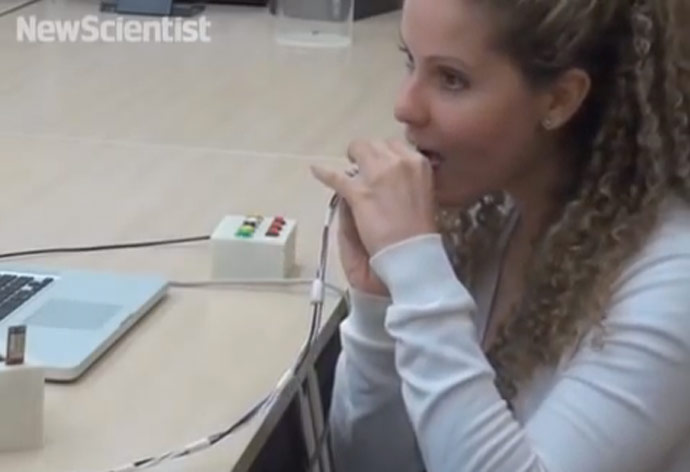Digital Simulator May Soon Allow You To Taste Virtual Food


A new digital simulator can produce tastes right on a person’s tongue. The simulator, developed by a team at the National University of Singapore led by Nimesha Ranasinghe, uses an electrode to reproduce all four taste categories: sweet, salty, bitter and sour.
The simulator works by sending an alternating current through an electrode touching the tip of the tongue. Combined with small changes in temperature, a person’s taste receptors are “fooled” into tasting a designated food.
The device is noninvasive but a bit large. According to New Scientist, Ranasinghe hopes that a redesign will allow users to keep their mouths almost closed while maintaining contact.
Applications Of Virtual Tasting
The applications of taste simulators are seemingly endless. The simulator’s informational video suggests commercial applications in games and other media. “The system will allow players to sample food in video games,” the narrator says. “Taste could also be used as a reward system: a sweet treat could be delivered for completing a level, while a blast of bitterness could be produced for a low score.”
Ranasinghe has larger dreams for the invention, speaking of healthcare applications. “People with diabetes might be able to use the taste synthesizer to simulate sweet sensations without harming their actual blood sugar levels,” he said on New Scientist. “Cancer patients could use it to improve or regenerate a diminished sense of taste during chemotherapy.”
Now, Ranasinghe’s team is working on other, similar devices. A so-called digital lollipop would give the experience of a continuous sugary taste without any actual consumption. The team is also working on TOIP, taste over internet protocol. The system would allow the easy transmission of data required to recreate different tastes.









































